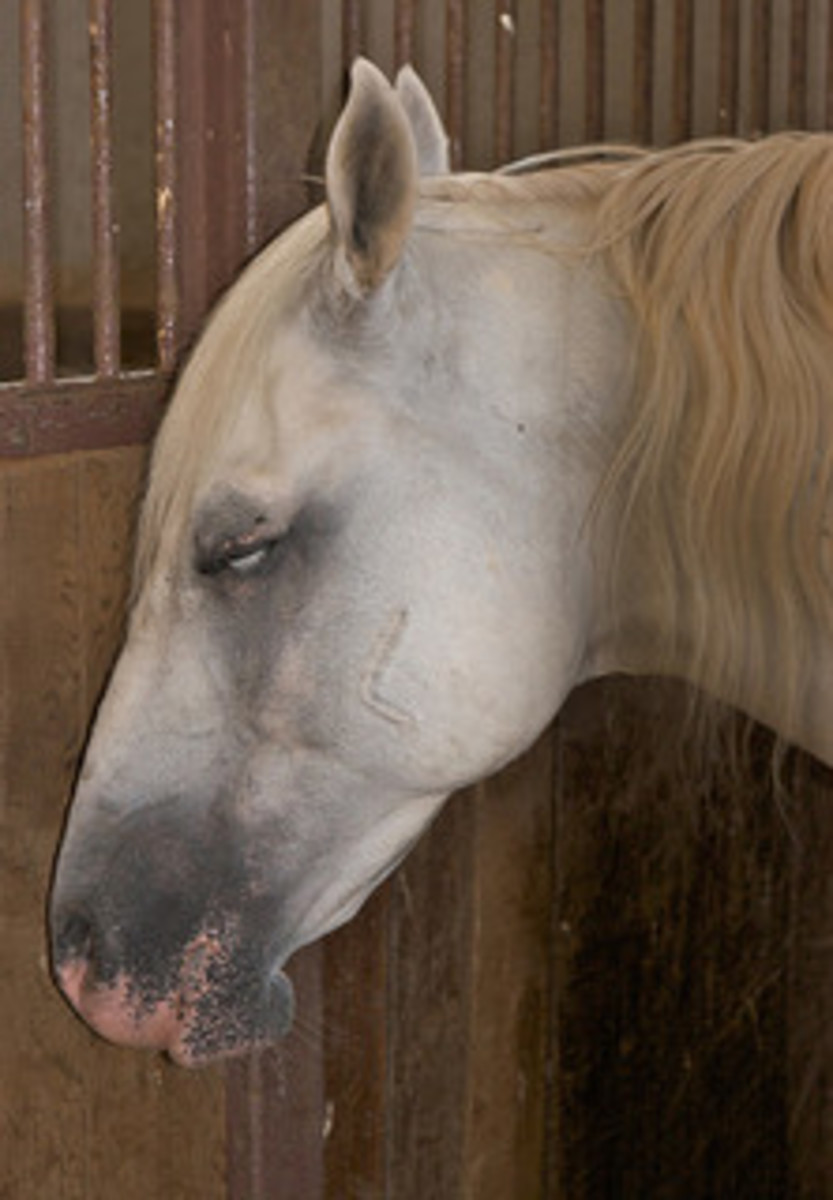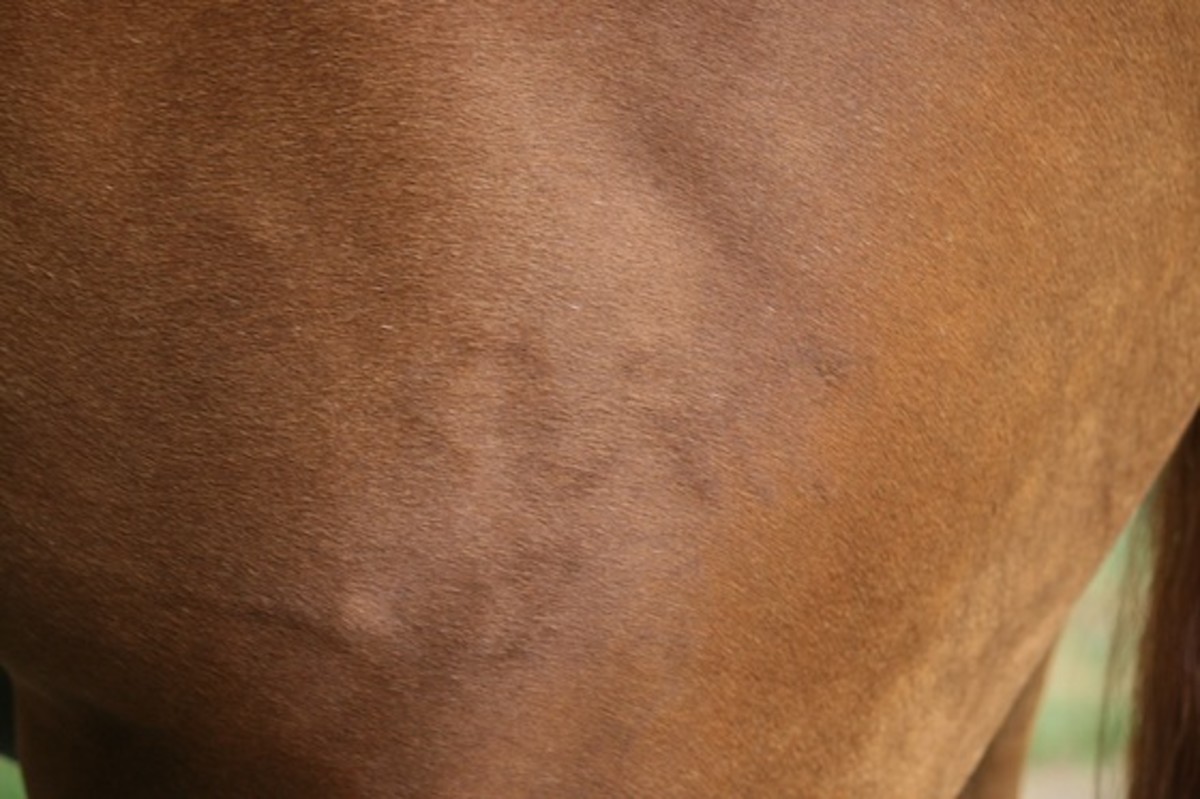Is a warmblood horse’s brand a badge of pride or an invitation to controversy?
In recent years, both research and legislation have looked on the practice of branding young horses to identify them as approved members of a specific breed. Last week, the latest research was published. It came from the University of Vienna, and it examined not the act of branding but how the brand served to actually be able to identify the horse. That is, of course, the stated purpose of branding a horse.
Despite increasing evidence that branding foals causes the animals stress, many horse breeders still claim that this practice represents the best method for identifying the animals. Although the debate has raged for some time, nobody has thought to pose the crucial question: how reliably can brand marks be read later? This issue has now been addressed by the research team of J?rg and Christine Aurich at the University of Veterinary Medicine, Vienna.

The results have just been made available online in The Veterinary Journal and may well spell the end of the line for the traditional practice of branding horses.
There are many reasons why it is important to be able to identify farm animals, horses and small companion animals, the Aurichs reported. Unique identification marks are essential for ensuring the correctness of breeding programs, for preventing the spread of disease and for eliminating the possibility of deceit in competitions or when animals are sold.
The traditional method of marking larger farm animals relies on branding with hot irons or on ear-tagging but this is deemed inappropriate for use on dogs and cats, which are identified by the implant of a microchip transponder. Until recently, horses were generally branded but following concerns that the practice is unnecessarily cruel, there has been a gradual switch towards the use of microchips.
American readers may be surprised to learn that branding has essentially been discontinued in the European Union, although several countries still accept it and breed registries claim that this traditional method is perfectly satisfactory and obviates the need for costly equipment.
Comparisons between the two methods for marking horses have focused on how they are perceived by the animals: does either method cause more stress or more harm to the horse?

Surprisingly, however, no attention has been paid to the other side of the coin. There is no doubt that microchips can be unambiguously decoded, providing the necessary equipment is available, but how well can brand marks be read?
Brands on horses generally combine a symbol to indicate the particular breed with a two-digit number to identify the individual animal. To assess the readability of the markings, the researchers asked three experienced people to record the brands of about 250 horses participating in an equestrian tournament in Germany. All three testers were able to recognize the breed symbols on about 90% of the animals and for about 84% of the animals the symbol was recorded correctly by all three people.
However, the situation for the two-digit numbers was dramatically different. While each of the three readers read the numbers correctly on about half of the horses, the correct number was recorded by all three of them for less than 40% of the animals.

To assess the legibility of brand marking under ?ideal’ conditions, the researchers examined the markings on 28 horses that had been euthanized (for reasons not related to branding).
Surprisingly, the brand marks could be clearly identified on only nine of the animals, while for six horses neither the brand symbol nor the two-digit number could be deciphered even after the site of branding (generally the left thigh but in two cases the left side of the neck) had been shaved.
The researchers conclusion was that this finding confirmed the unreliability of marking horses by branding. At the same time, the team naturally examined the sites where the horses had been branded for evidence of tissue damage. Nearly all of the horses had histological changes at the branding sites, consistent with having experienced a third-degree thermal injury.
J?rg Aurich sums up the results concisely: “Branding is clearly associated with local tissue damage and the markings are often insufficiently clear to be decoded, even by experienced observers or after the horse has died. There really isn’t any reason to continue to mark horses in this outdated way.”
The paper “Readability of branding symbols in horses and histomorphological alterations at the branding site” by J?rg Aurich, Peter Wohlsein, Manuela Wulf, Marina Nees, Wolfgang Baumg?rtner, Mareike Becker-Birck and Christine Aurich has just been published online in The Veterinary Journal. While only the abstract may be viewed by non-subscribers, the online posting includes the histological images of the branded skin.

Acknowledgments:
Information for this article was provided by the University of Vienna. The field work was carried at the Graf Lehndorff Institute for Equine Science, a joint research unit of the University of Veterinary Medicine, Vienna, Austria, and the Brandenburg State Stud at Neustadt (Dosse), Germany. The post mortem analysis was performed at the Department of Pathology, University of Veterinary Medicine, Hanover, Germany.
To learn more about Dr. Aurich’s other research:
Stress Response to Classical Extension vs Hyperflexed Neck Positions Compared in European Research








